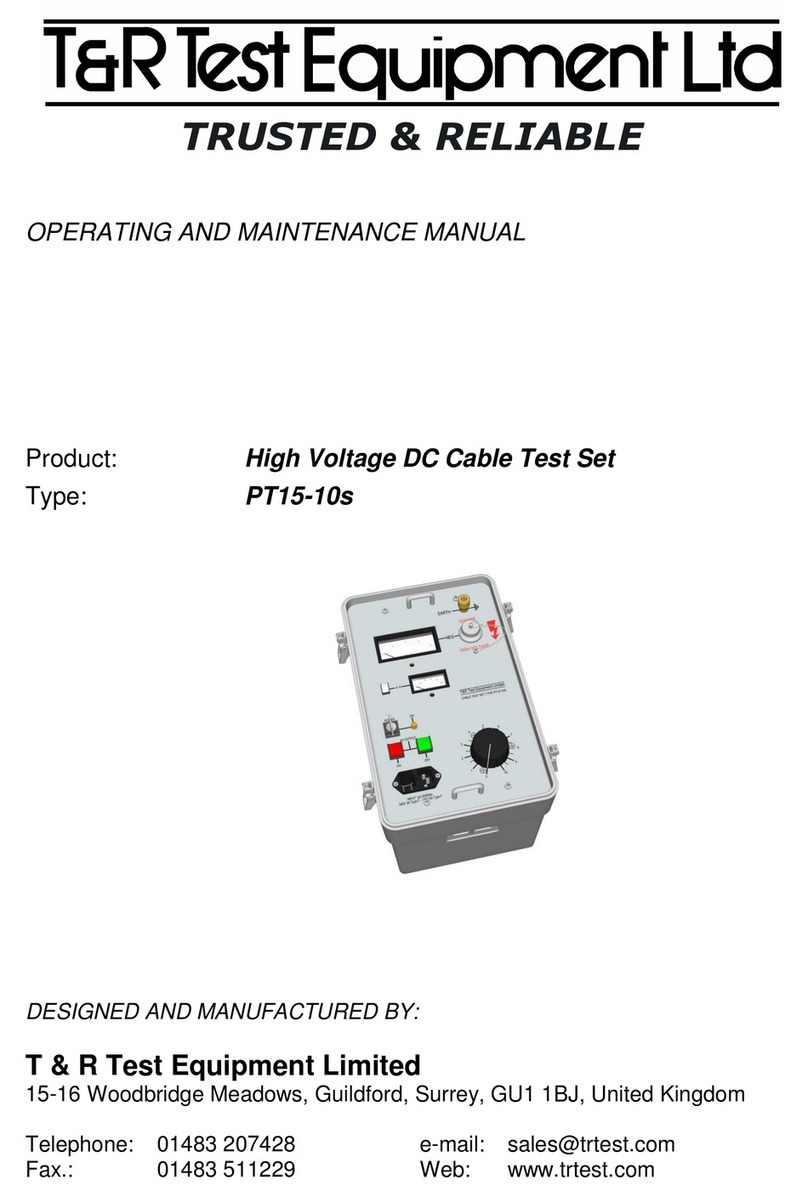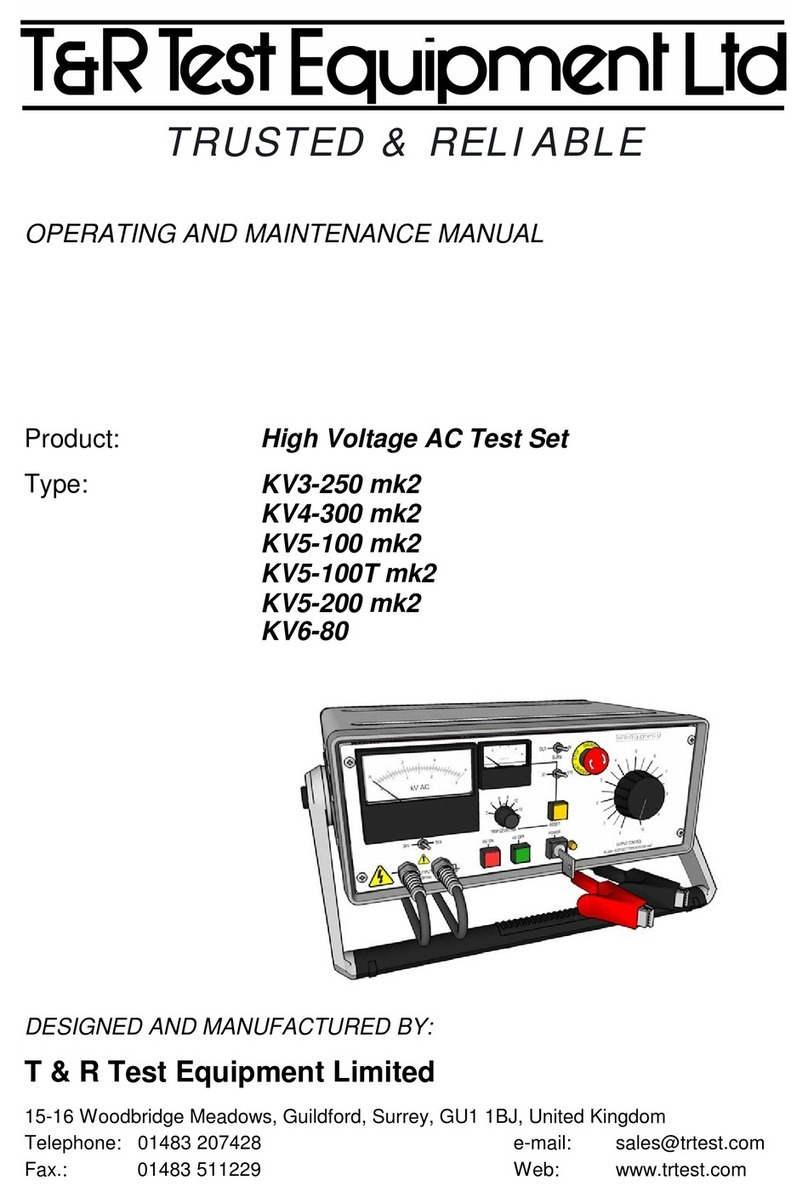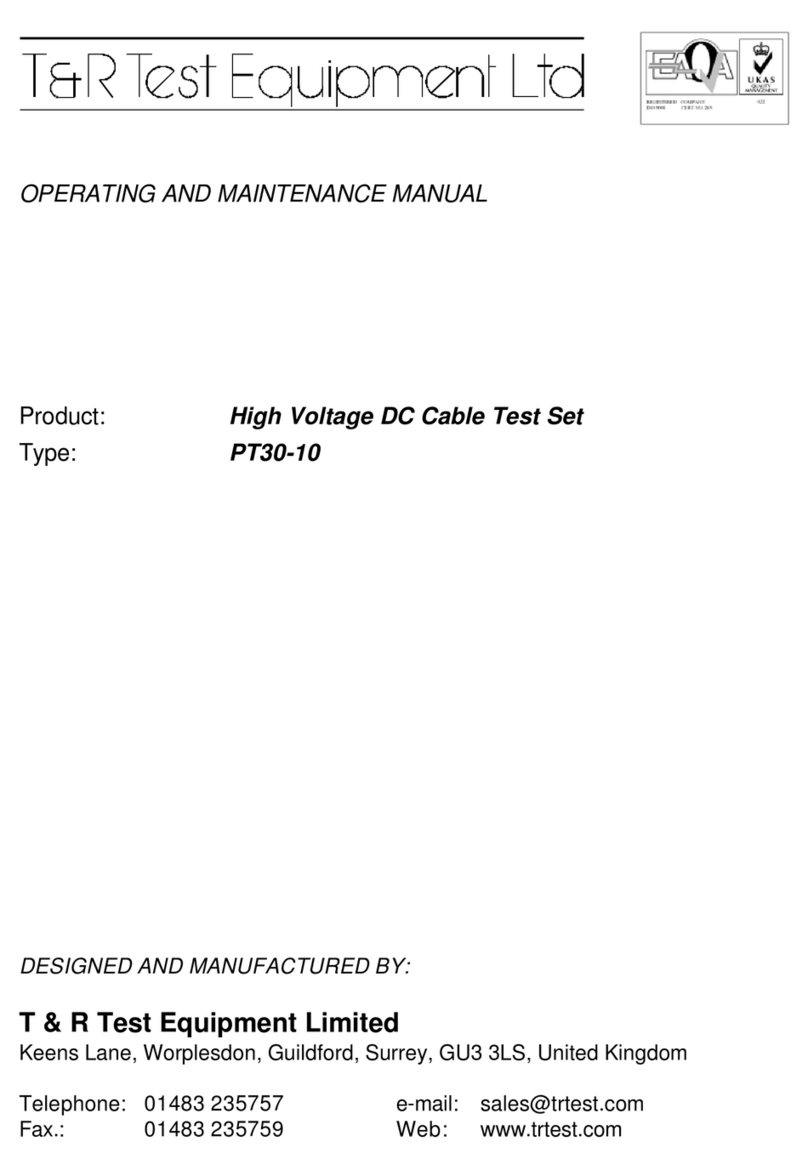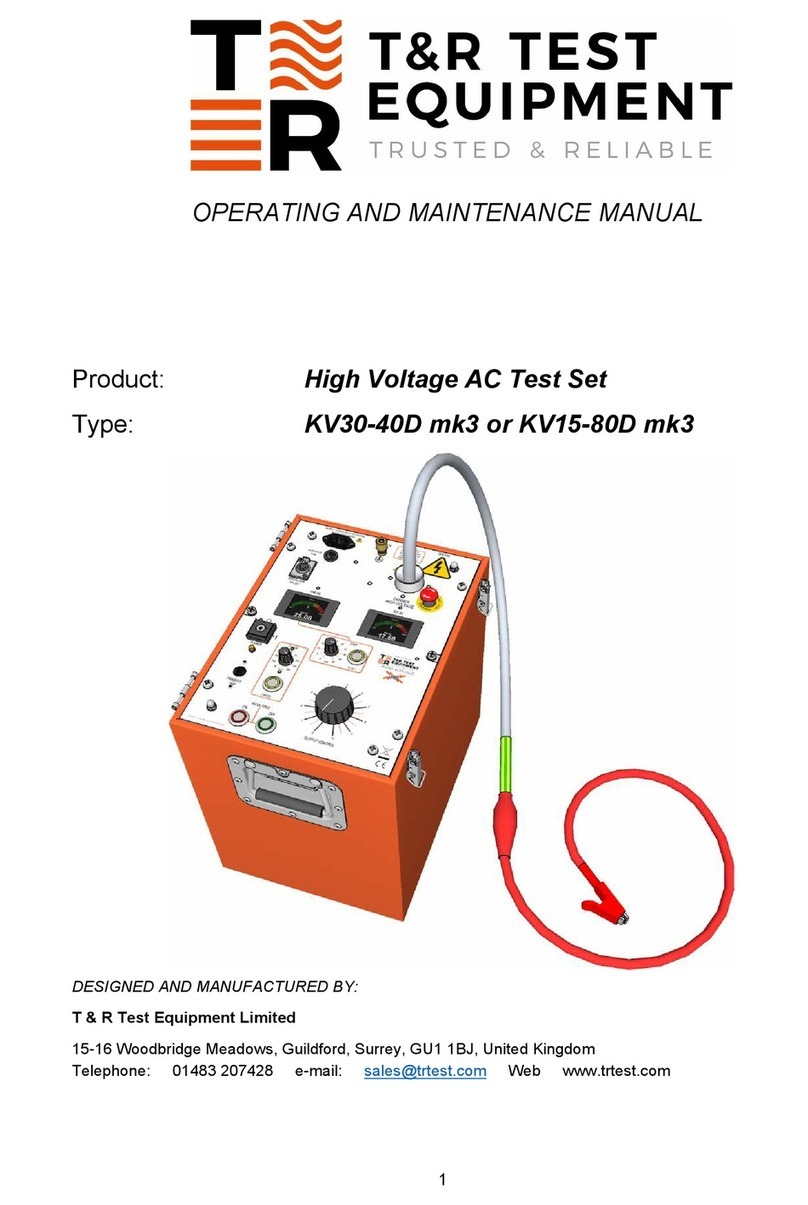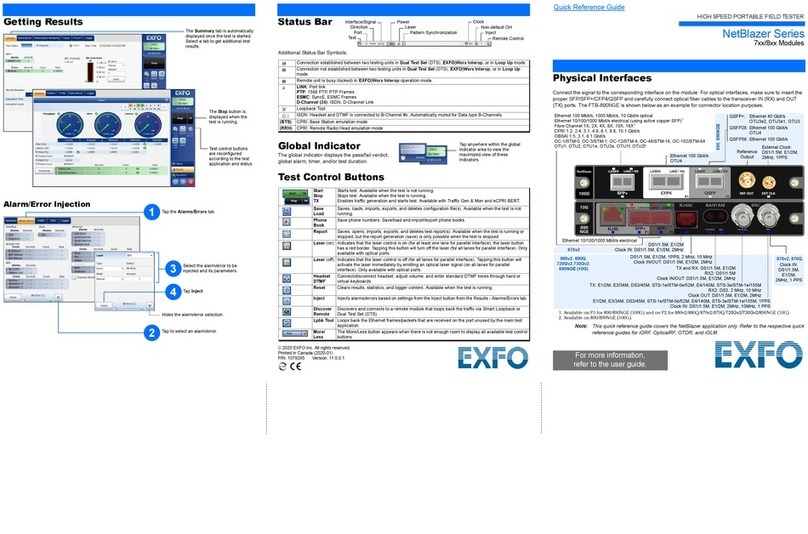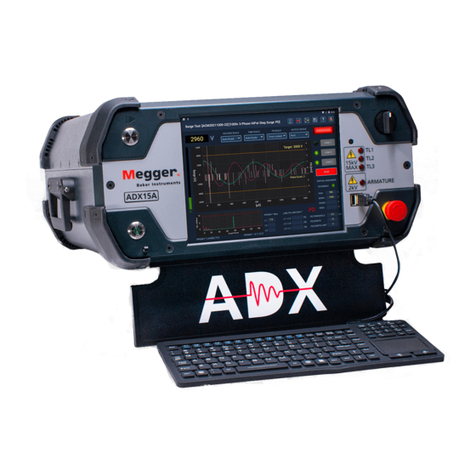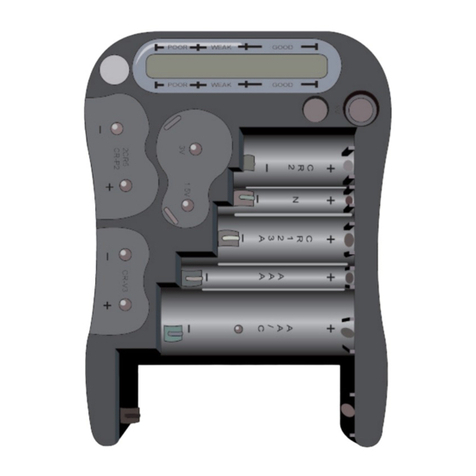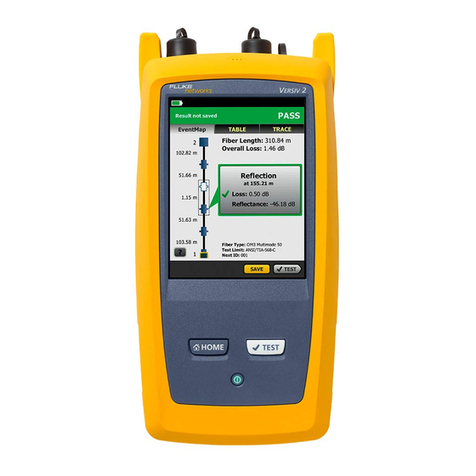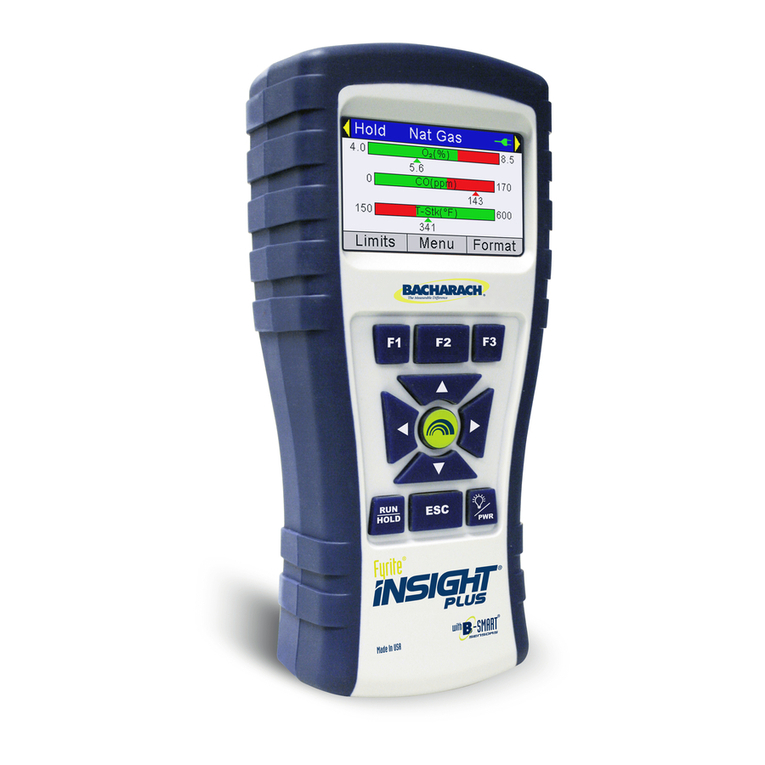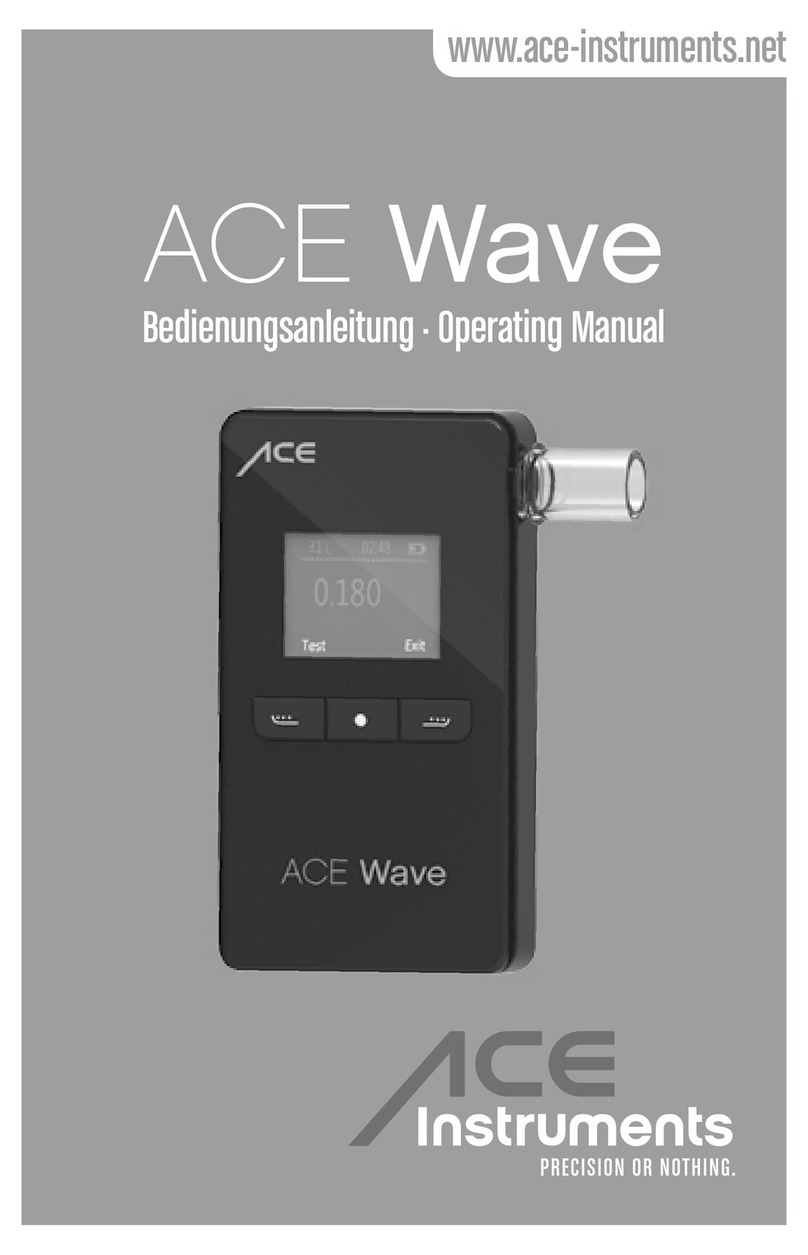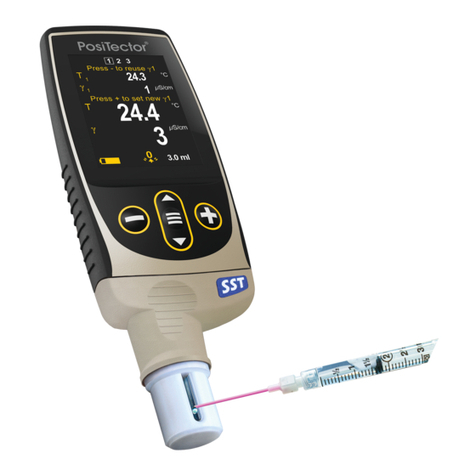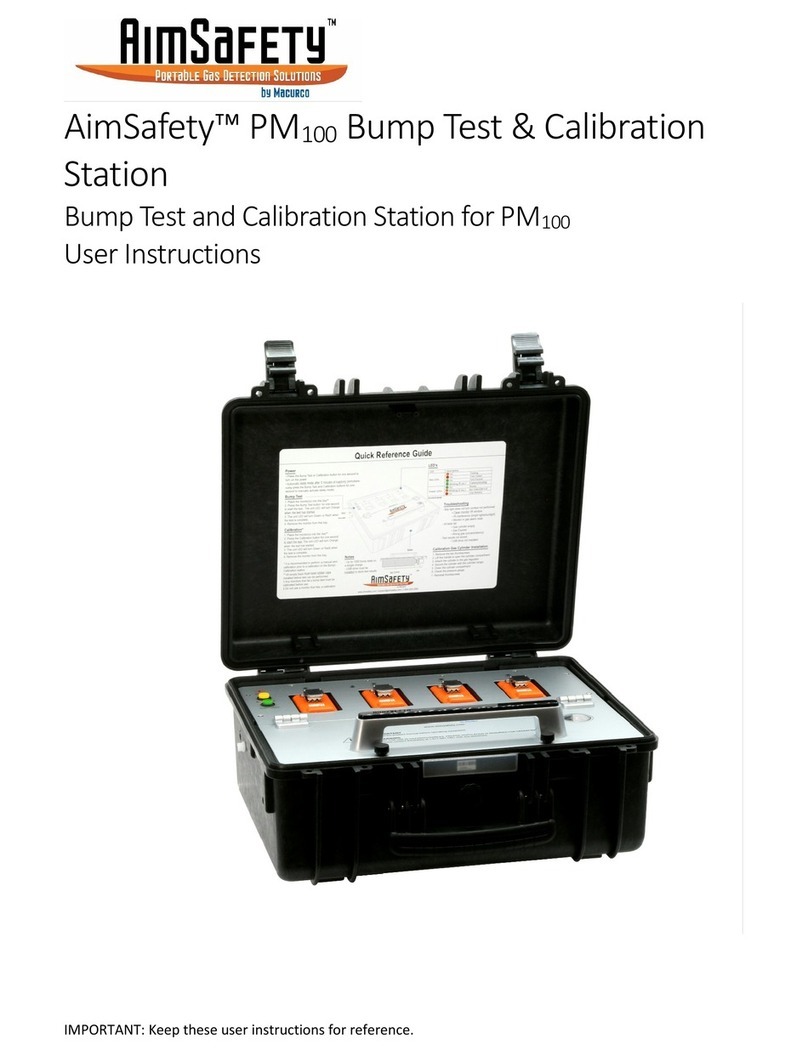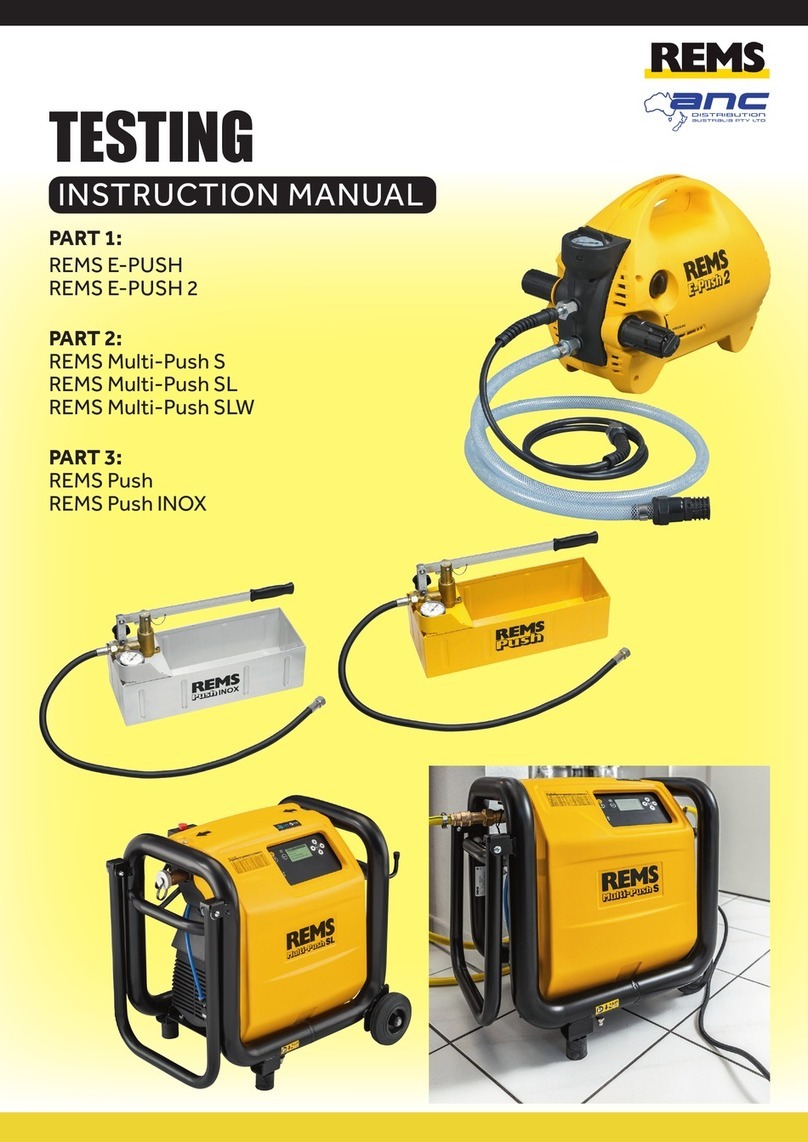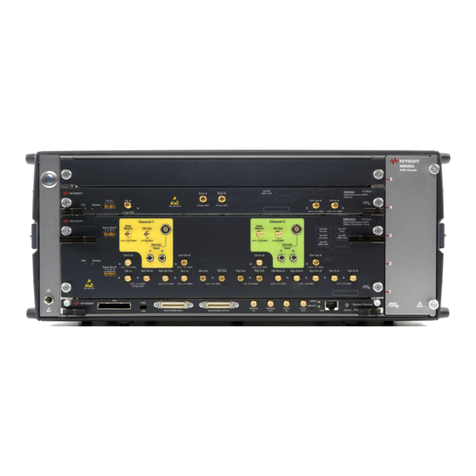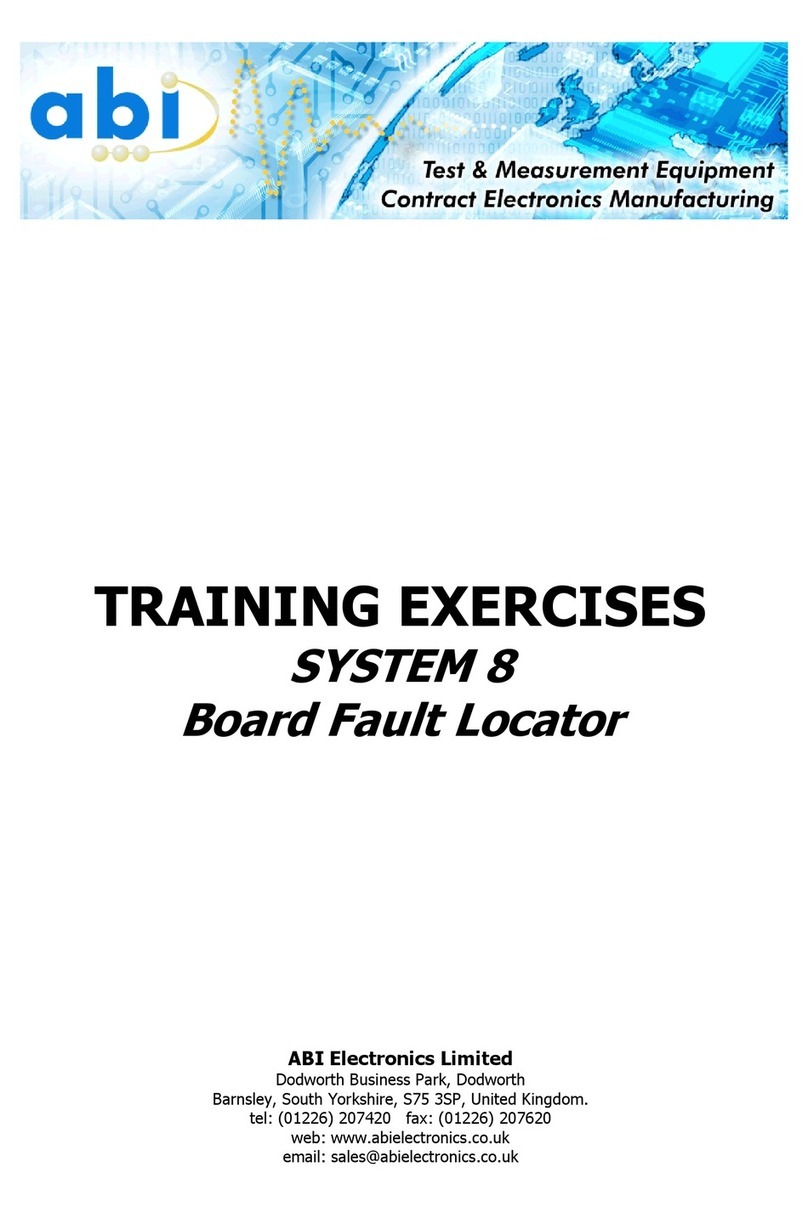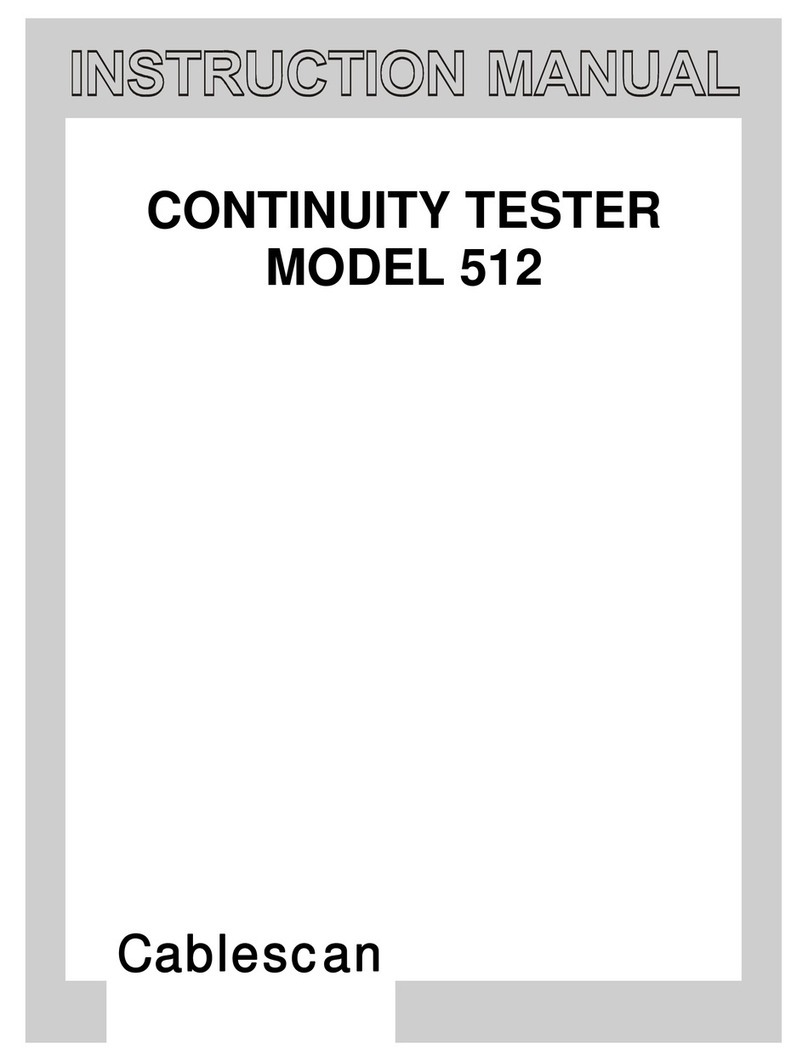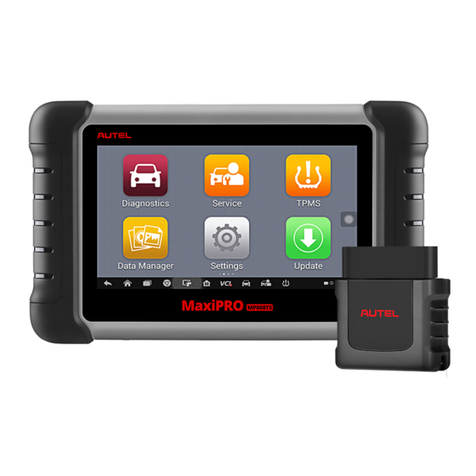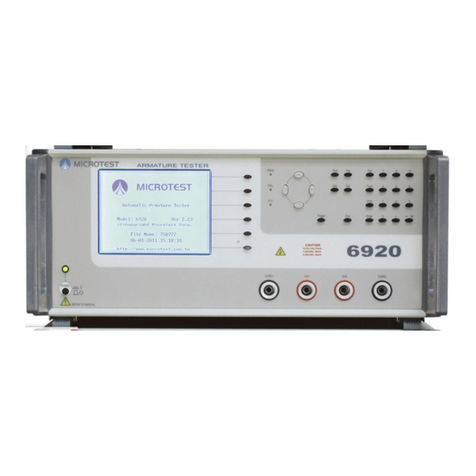T&R KV5-100 mk3 Operating instructions

0
OPERATING AND MAINTENANCE MANUAL
Product:
High Voltage AC Test Set
Type:
KV5-100 mk3
DESIGNED AND MANUFACTURED BY:
T & R Test Equipment Limited
15-16 Woodbridge Meadows, Guildford, Surrey, GU1 1BJ, United Kingdom
Fax: 01483 511229 Web: www.trtest.com

1

2
GENERAL SAFETY STATEMENT
The following safety precautions should be reviewed to avoid injury to the user and damage to
the product (and other products connected to it). To avoid potential hazards only use this
product as specified.
•Only suitably qualified personnel should use this equipment. Servicing of this
product should only be carried out by suitably qualified service personnel.
•The high voltage generated by this unit is extremely dangerous and may be fatal.
•This unit is designed for operation in a designated high voltage test area.
To Avoid Fire Hazards and Personal Injury
•Use the correct power supply lead. Only use a suitably rated and approved power supply
lead for the country of use.
•Ensure that systems that the unit is to be connected to are dead.
•Do not connect and disconnect leads whilst outputs are switched on.
•Ensure that the product is grounded. To avoid electric shock it is essential that the
grounding conductor is connected to the earth ground. An additional earth terminal is
provided on the unit for connection to a local earth if necessary. Ensure that the unit is
properly grounded before making any connections to inputs or outputs.
•Output ratings must be observed to prevent fire hazards and risk of injury to the operator.
Consult the product manual for ratings information before making any connections to the
unit.
•It is ESSENTIAL to consult the product manual for rating information before making any
connection to a terminal or terminal group marked with a warning triangle.
•Only use fuses of a type and rating specified for this product.
•Do not operate the unit out of its case or with any covers or panels removed.
•Do not touch exposed connections and components when power is present.
•Do not operate the product if any damage is suspected. Refer the unit to qualified service
personnel to be checked.
•Do not operate the unit in wet or damp conditions
•Do not operate the unit in an explosive atmosphere
•This unit is not designed for unattended operation
If any further queries occur regarding the usage and maintenance of
the equipment detailed in this manual, please refer these to the
supplier of the equipment in the first case or to:
T & R Test Equipment Limited

3
HIGH VOLTAGE SAFETY
It is essential to follow safe working procedures when working with high voltage. Information
on accepted codes of practice should be obtained from your local heath and safety regulatory
body.
It is essential that the KV5-100 mk3 series test sets are only used in a suitable test
environment. EN50191:2010 (Erection and Operation of Electrical Test Equipment) provides
information on the installation and use of test installations and is referenced by health and
safety law in the EU.
IEEE standard 510-1983 (IEEE Recommended Practices for Safety in High-Voltage and High-
power Testing) also provides a working framework for establishing safe procedures, but must
be read in conjunction with local regulations and accepted codes of practice. Although this
standard has since been withdrawn, it does contain very good practices that are still
referenced today, the following excerpts are taken from IEEE 510:
•All ungrounded terminals of the test equipment or apparatus under test should be
considered as energised.
•Common ground connections should be solidly connected to both the test set and the test
specimen. As a minimum, the current capacity of the ground leads should exceed that
necessary to carry the maximum possible ground current. The effect of ground potential
rise due to the resistance and reactance of the earth connection should be considered.
•Precautions should be taken to prevent accidental contact of live terminals by personnel,
either by shielding the live terminals or by providing barriers around the area.
•The circuit should include instrumentation for indicating the test voltages.
•Appropriate switching and, where appropriate, an observer should be provided for the
immediate de-energisation of test circuits for safety purposes. In the case of dc tests,
provisions for discharging and grounding charged terminals and supporting insulation
should also be included.
•High-voltage and high-power tests should be performed and supervised by qualified
personnel.
•Consideration should be given to safety regulations which may apply to specific
circumstances; for example, HSE, company, or government regulations.
In the use of signal-gathering equipment, each device should be used in such a manner that it
will not present a personnel hazard should it inadvertently become a part of the high-voltage
circuit, or fail to function properly.

4
SAFETY TERMS AND SYMBOLS
The following safety symbols appear on the equipment:
CAUTION/WARNING –Refer to manual
DANGER –High voltage
Mains off
Mains on
The following safety symbols appear in this manual:
CAUTION
This action or procedure may be dangerous if not carried
out correctly, and may cause damage to the equipment or
connected equipment.
WARNING
This action or procedure may be cause injury or death to
the operator or other personnel if not carried out correctly
using applicable safety procedures.

5
CONTENTS
1DESCRIPTION OF EQUIPMENT 7
1.1 Electrical Specification 7
1.1.1 Supply Requirements 7
1.1.2 Output Specifications 7
1.1.3 Zero Voltage Interlock 7
1.1.4 External Interlock 7
1.2 Output Voltage Control 7
1.3 Overload Protection 8
1.3.1 Variable overload 8
1.4 Metering 9
1.5 Fault Burn Facility 10
1.5.1 Fault Burning 10
1.5.2 Burn Switch 10
1.6 High Voltage Connection 10
1.7 Construction 10
2. OPERATION 11
2.1 Safety 11
2.1.1 Installation 11
2.1.2 Operation 12
2.2 Front Panel Layout 12
2.2.1 Front Panel Control Functions 13
2.3 Rear Panel Layout 14
2.2.2 Rear Panel Control Functions 14
2.4 Method of Operation 14
2.4.1 Connections 14
2.4.2 Operation 15

6
3. MAINTENANCE 16
4. STANDARD ACCESSORIES 17
5. OVERALL PERFORMANCE SPECIFICATION 18
6. REVISION 19

7
1 DESCRIPTION OF EQUIPMENT
1.1 Electrical Specification
1.1.1 Supply Requirements
KV5-100 mk3 115/230V 10% 600VA max
1.1.2 Output Specifications
The output voltage, current and duty cycle are as follows:
Unit
Output voltage
Output current
5 min on/
15 min off
1 min on/
15 min off
40 seconds on/
15 min off
KV5-100 mk3
0-5kV
100mA
-
-
One side of the high voltage transformer output is connected to the earth system of the
equipment.
1.1.3 Zero Voltage Interlock
The equipment is fitted with a zero volt interlock system on the output control. This interlock
prevents the output being energised unless the output control is in the minimum output
position.
1.1.4 External Interlock
The equipment is fitted with a external interlock system. The interlock socket on the back
panel must have a short circuit across it terminals to enable the output to be energised.
Note: the open circuit voltage across the interlock terminals is 240Vac and is connected
directly to the mains supply.
The unit is supplied with a plug fitted to the external interlock socket on the rear of the unit.
The plug contains a shorting link to enable the unit. If external interlocks are used, the
interlocks should replace the shorting link. Please note that the output will not switch on
without either the link fitted in the plug or a closed external interlock circuit.
1.2 Output Voltage Control
The output from the equipment is controlled from zero by means of the output control. To
increase the output voltage turn the control knob in a clockwise direction.
Note: The output cannot be energised unless the regulator knob is set to zero, thus operating the
zero voltage interlock switch.

8
1.3 Overload Protection
The equipment is fitted with a fuse and variable overload protection circuits as standard.
1.3.1 Variable overload
The variable overload protection system senses current changes in the high voltage circuit.
The trip levels are adjustable in two ranges each of 6 steps giving 2-12% and 20-120% rated
current.
Unit
Trip current ranges
X1
X10
KV5-100 mk3
2, 4, 6, 8, 10, 12mA
20, 40, 60, 80, 100, 120mA
The range change and selector switches are located on the front panel of the instrument. The
circuit will activate when the load current exceeds that set by the trip level selector switch.
WARNING
The variable overload trip circuit does not limit the output current.

9
1.4 Metering
The equipment is provided with the following metering ranges using analogue moving coil
meters:
Unit
Metering Ranges
Voltage
Current
Low
High
X1
X10
KV5-100 mk3
3kV
6kV
10mA
100mA
The ranges on both instruments are selected by means of switches located on the front panel.

10
1.5 Fault Burn Facility
The KV5-100 mk3 is provided with an internal current limit circuit which limits the output
current from the unit under short circuit conditions. This can be used to “burn” faults.
1.5.1 Fault Burning
Fault burn is where the arc is maintained through the failed test object. The product does this
by limiting the current and preventing the unit from tripping. Fault burning should be
approached very cautiously as it can cause serious damage to the test object, and is totally
unsuitable for many test objects.
1.5.2 Burn Switch
When the “burn” switch is in the “out” position, the unit behaves normally and the output
current is not limited. Switching the “burn” switch to “in” enables the current limiting
The current is limited to the following values at maximum output voltage when the “burn” is
enabled (the burn switch is in the “in” position):
Output Voltage
Maximum current
KV5-100 mk3
5kV
90-100mA
At lower output voltages, the burn current limit reduces in proportion to the output voltage.
When the “burn” switch is in the “out” position, the maximum current is approximately 2A for
short periods of time.
1.6 High Voltage Connection
WARNING
The equipment is supplied with crocodile clips on the output. These clips are
not insulated for high voltage use, and under no conditions must the high
voltage connection be approached or touched whilst the unit is switched on.
The test object must be earthed before making or breaking connections after
testing. A prohibition zone of at least 30mm must be maintained around the
high voltage connection (from EN50191:2000)
This equipment must be used either with an interlocked enclosure for the
object under test or in a suitable high voltage test area. Adequate safety
clearances must be maintained between the operator and all high voltage
parts at all times.
1.7 Construction
The unit is housed in a robust case with a carrying handle. The handle will also act as a tilt
support stand which is locked in various positions by pressing the release buttons at each end
of the handle.

11
2. OPERATION
2.1 Safety
The outputs from all units in the range are very dangerous, and if used incorrectly could be
fatal. The unit must only be installed, operated, and maintained by suitably qualified and
trained personnel.
It is essential to follow accepted safety procedures and local health and safety regulations and
guidelines when installing and operating high voltage equipment. A risk assessment should
be undertaken on both the installation and the working procedures to ensure the safety of test
personnel and all other personnel.
2.1.1 Installation
The unit is designed to be installed and used in an indoor environment.
2.1.1.2 Test Area
The unit must be installed in a suitable high voltage test area completely enclosed by walls or
some type of physical barrier. Appropriate controls and safety measures must be applied to
this area including interlocks connected to the supply or HV unit interlock to ensure that the
unit cannot be switched on unless the area is secure. Refer to BS EN50191:2001 and IEEE
Std 510-1983 for further details of suitable test enclosures. The test area must also be
identified with suitable signs.
2.1.1.3 Mains supply
The unit must be connected to a suitable supply via an approved and suitably rated mains
connector with earth connection.
2.1.1.3.1Supply Voltage Selection
Disconnect the KV5-100 mk3 from the Mains Supply.
The supply voltage selector is located in the input socket module. The method of
selection is as follows:
a. Remove fuse drawer .
b. Remove and rotate fuse carrier until desired supply voltage is seen through
the fuse drawer window.
c. The KV5-100 mk3 is suitable for 2 different supply voltages as follows:
240V or 115V.
d. Replace fuse drawer once the desired voltage has been selected.
IMPORTANT! Under no circumstances should the supply voltage selector be altered when the
equipment is energised.
ALWAYS ENSURE THAT THE SUPPLY VOLTAGE SELECTOR IS IN THE
CORRECT VOLTAGE POSITION BEFORE ENERGISING THE EQUIPMENT

12
2.1.1.4 Earthing
The unit must be securely earthed. The earth terminal on the rear of the unit may be
connected to a low impedance local earth if required.
2.1.2 Operation
It is essential that safe working practices are maintained when conducting high voltage
testing. Safe working procedures must be implemented to accepted standards.
2.1.2.1 Interlocks
The KV5-100 mk3 series is provided with an external interlock circuit that may be used to link
to interlock switches on the high voltage test area.
An interlock should be considered to be a safety back-up feature. An interlock should not be
regarded as a substitute for adequate safety rules and proper operator vigilance.
2.2 Front Panel Layout
Figure 2.1 KV5-100 mk3 front panel
Figure 2.3 KV5-100T front panel

13
2.2.1 Front Panel Control Functions
A kV Meter
Displays output voltage
B mA Meter
Displays load current
C mA x1/x10 selector switch
Selects mA meter range
D Burn switch
Selects burn facility
E Trip reset switch
Resets the output current trip
F HV Output lead
HV output to object under test
G kV meter range switch
Selects kV meter range
H Earth output lead
Earth output to object under test
J HV Output ON pushbutton
Switches HV output on. Illuminated red when
output is on.
K Variable trip level select
Selects output current trip level
L HV Output OFF pushbutton
Switches HV output off. Illuminated green
when output is off.
M Mains supply switch (key operated)
Key operated mains on/off switch
O Emergency stop button
Switches HV output off.
N Supply on indicator
Supply on indicator
P Output level control
Set output voltage

14
2.3 Rear Panel Layout
Figure 2.2 KV5-100 mk3 rear panel
2.2.2 Rear Panel Control Functions
A Output fuse
Fuse for output voltage
B Interlock socket
For connection to an external interlock system
C Main power input
Selects mA meter range
D Input fuse/Voltage selector
Mains input fuse and selects mains input
voltage (see 2.1.1.3.1)
E Earth Terminal
For connection to a low impedance local earth
2.4 Method of Operation
2.4.1 Connections
WARNING
Before making any connections please ensure that you are aware of all
hazards relating to the system and environment in which it is operating.
Ensure that the key switch is in the off position and the key is removed
before making any connections. The test object must be earthed before
making or breaking any connections after testing.
Ensure that the key switch is in the off position and the key is removed before making
connections to the object under test or connecting the unit to the mains supply.
Connect the mains input lead to a suitable three pin supply outlet.

15
2.4.2 Operation
Switch on the key-operated mains switch. The following will now occur:
a. Power ON lamp will be lit
b. HV OFF lamp will be lit
c. The variable overload reset lamp will be lit
Press the variable overload reset push button. This will arm the trip circuit.
Select the desired voltage range on the kV meter and set the desired overload trip level.
Before commencing testing ensure that all external interlocks are closed, the emergency stop
button is released and that the regulator is in the fully anti-clockwise position.
Press the HV ON pushbutton. The HV output will now energise, and the red HV on indicator
in the pushbutton will light up. The output voltage can now be increased to the desired level as
indicated on the kV meter.
In the event of a test object failure the HV output will be automatically switched off by the
protection system.
When the test is completed, turn the regulator control knob fully anti- clockwise and switch off
the HV output and then the mains supply.
In case of emergency, the emergency stop push button is provided, switching off the HV
output when engaged.

16
3. MAINTENANCE
WARNING
Maintenance and repair of the KV5-100 mk3 series must only be carried out
by suitably qualified and trained personnel. Potentially lethal voltages are
present inside the unit and on the output leads.
Ensure that the unit is disconnected from the mains before removing
any covers.
It is advisable to check the carbon brush on the variable transformer for signs of wear on a
regular basis. To gain access to the variable transformer remove the top cover of the unit
(secured by four screws - two in each side of the case).
Replacement brushes are available from T&R Test Equipment.

17
4. STANDARD ACCESSORIES
The following items are provided with the equipment:
a. Mains input lead.
b. 2 keys (for mains ON/OFF switch).
c. Operating & Maintenance Manual.
d. 1x F5A 1¼ inch fuse and 1x T4A 20mm fuse: KV5-100 mk3

18
5. OVERALL PERFORMANCE SPECIFICATION
Insulation resistance at 500V DC: >10 megohms between mains input and frame.
Applied voltage test: 2.0kV RMS for 1 minute between mains input and frame.
Accuracy of instruments
kV meter: ±1.5% of FSD
mA meter: ±2.5% of FSD
Instrument calibration is traceable to national standards.

19
6. REVISION
Product / Type: KV5-100 mk3 series High Voltage AC Test Systems
File: KV5-100mk3 series manual v1
Author: P Cole
Issue / Date: 1 18/09/20
Modified By: M. Clancy
Checked By:
G Bond
Date:
06/10/20
Table of contents
Other T&R Test Equipment manuals
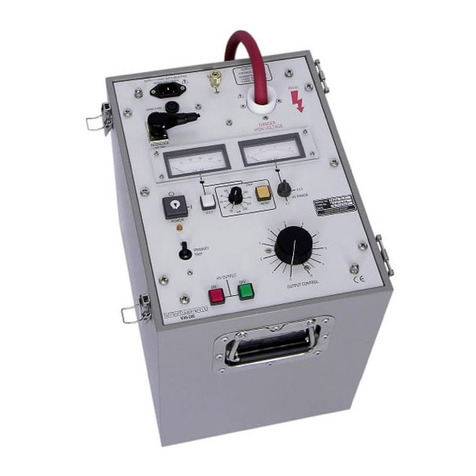
T&R
T&R KV30-40 Operating instructions
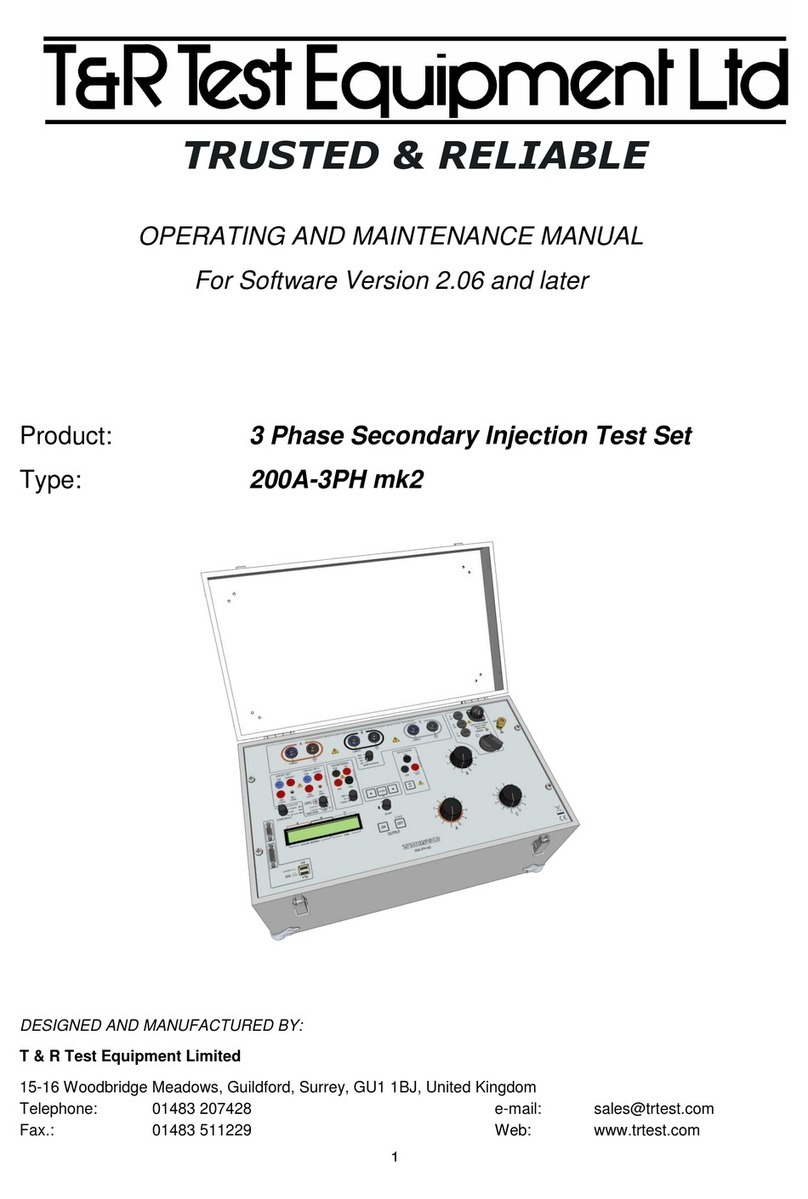
T&R
T&R 200A-3PH mk2 Operating instructions
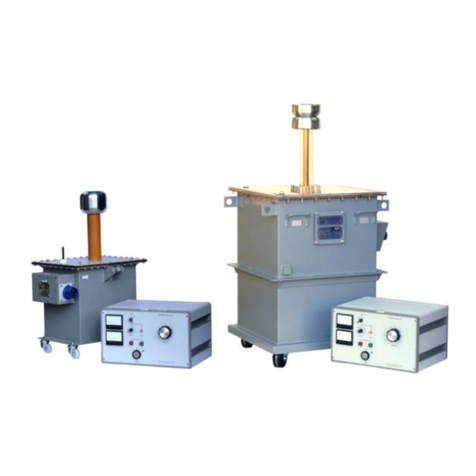
T&R
T&R KV mk2 Series Operating instructions

T&R
T&R TPT9000 Operating instructions
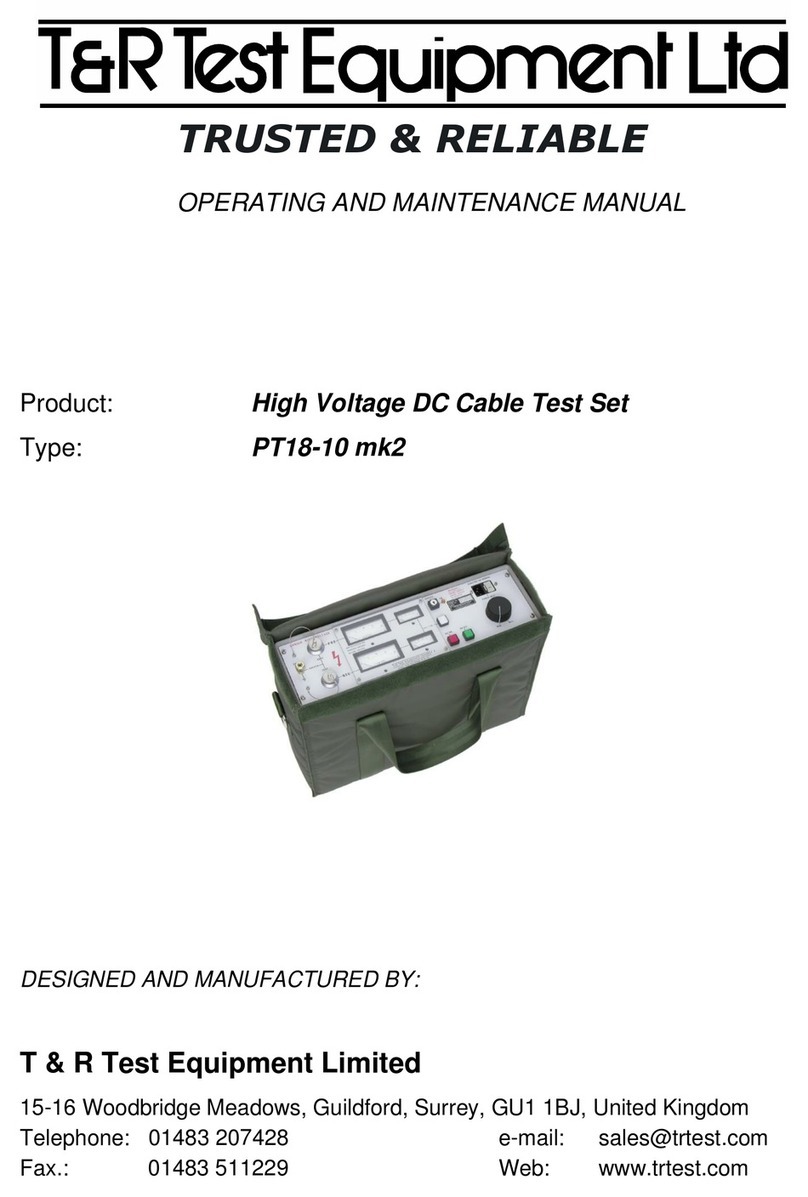
T&R
T&R PT18-10 mk2 Operating instructions
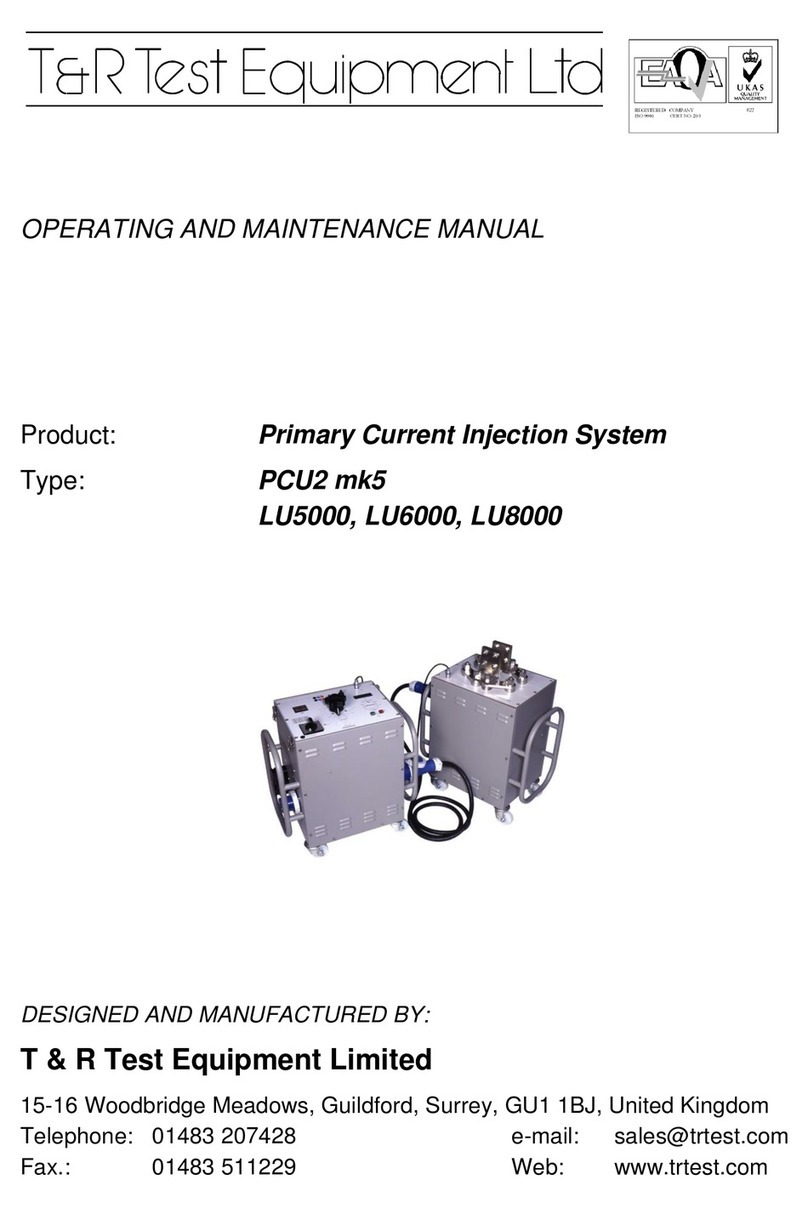
T&R
T&R PCU2 mk5 Operating instructions
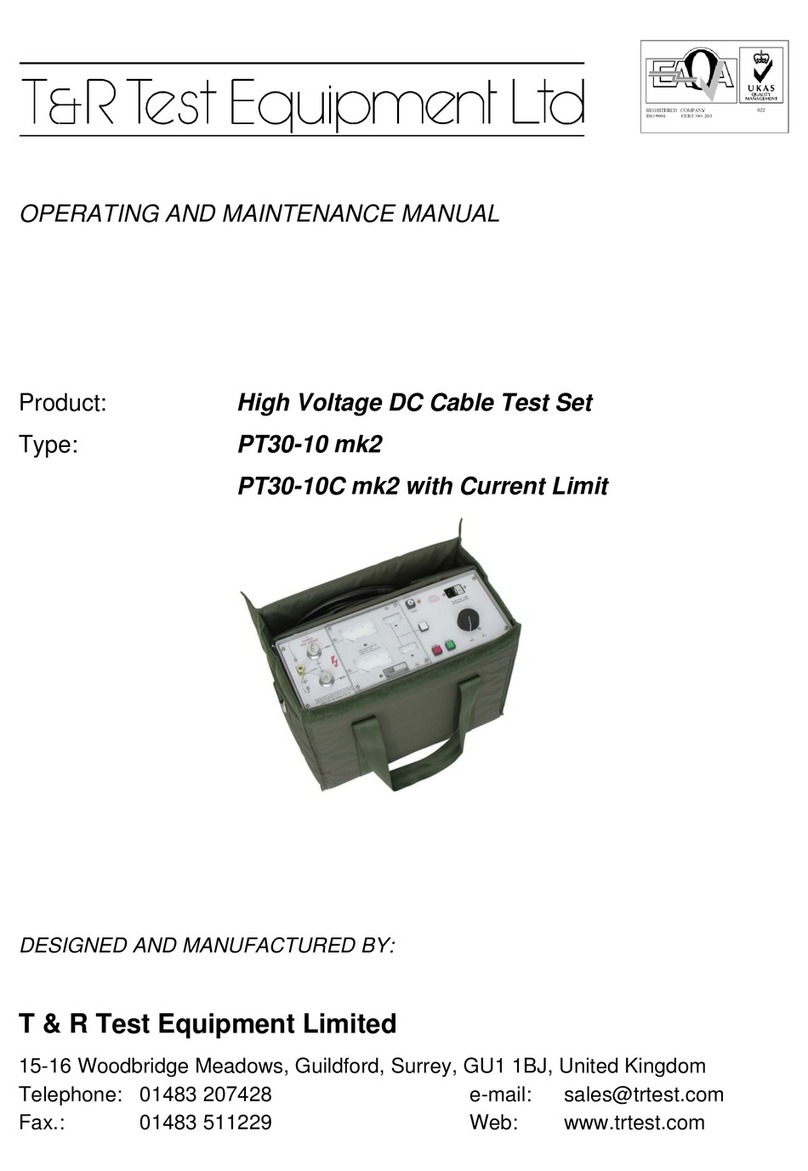
T&R
T&R PT30-10 mk2 Operating instructions
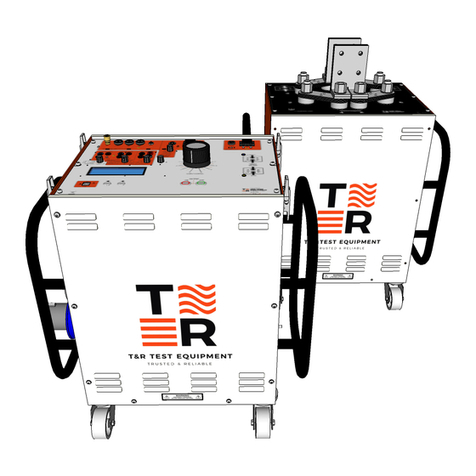
T&R
T&R CU-Ps Operating instructions
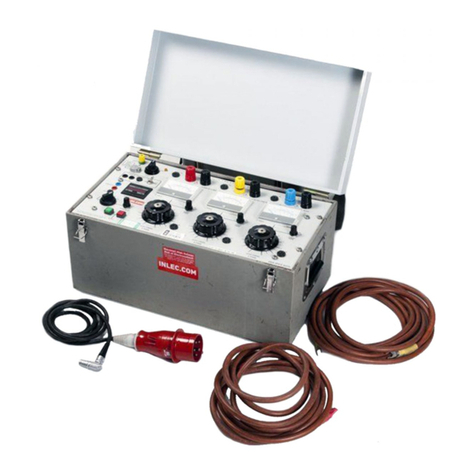
T&R
T&R 200A-3PH Operating instructions
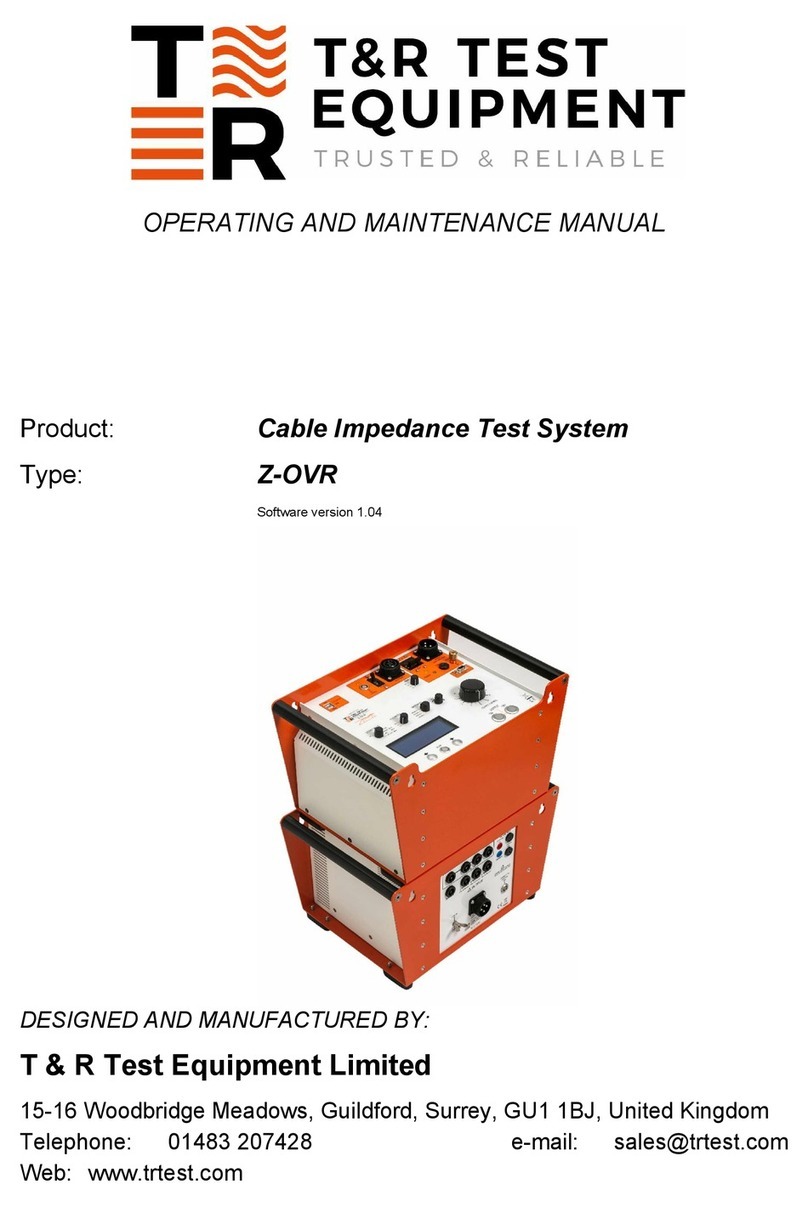
T&R
T&R Z-OVR Operating instructions
